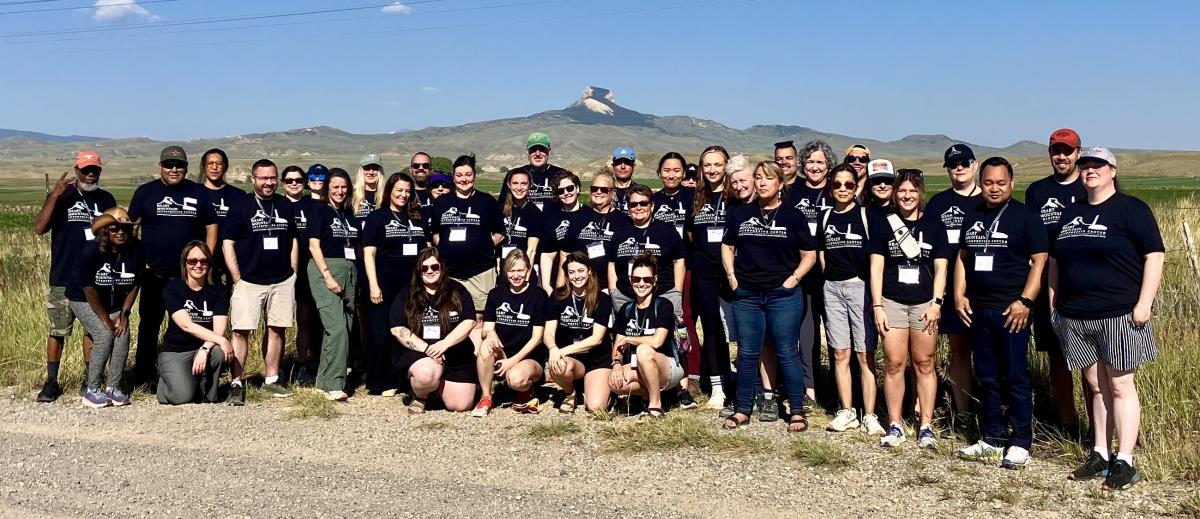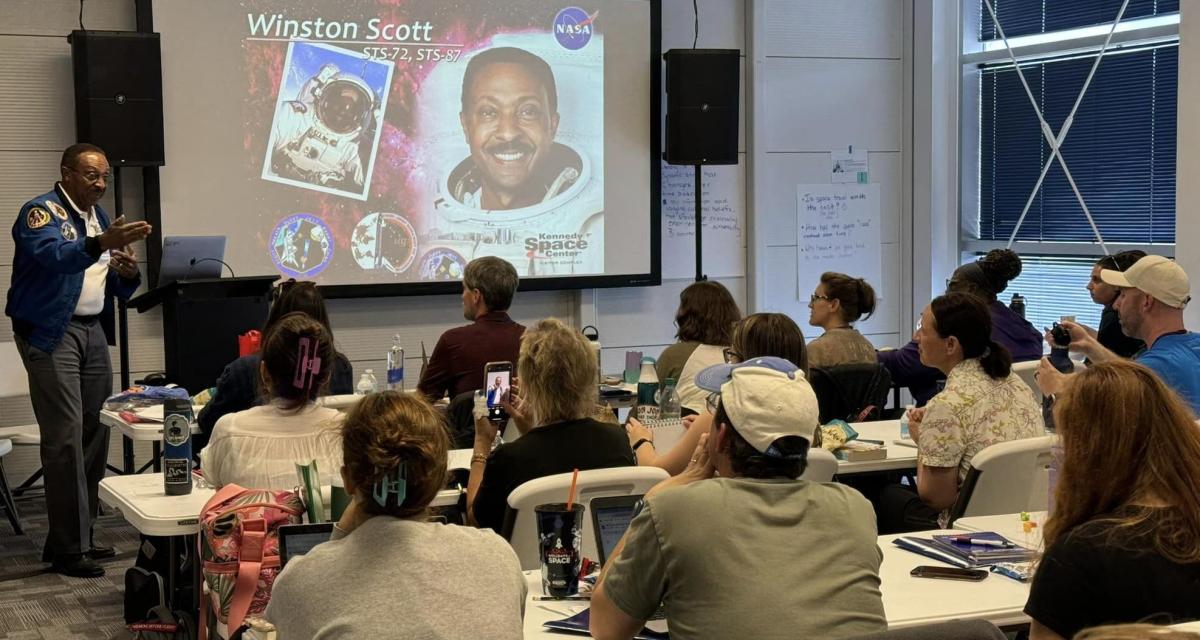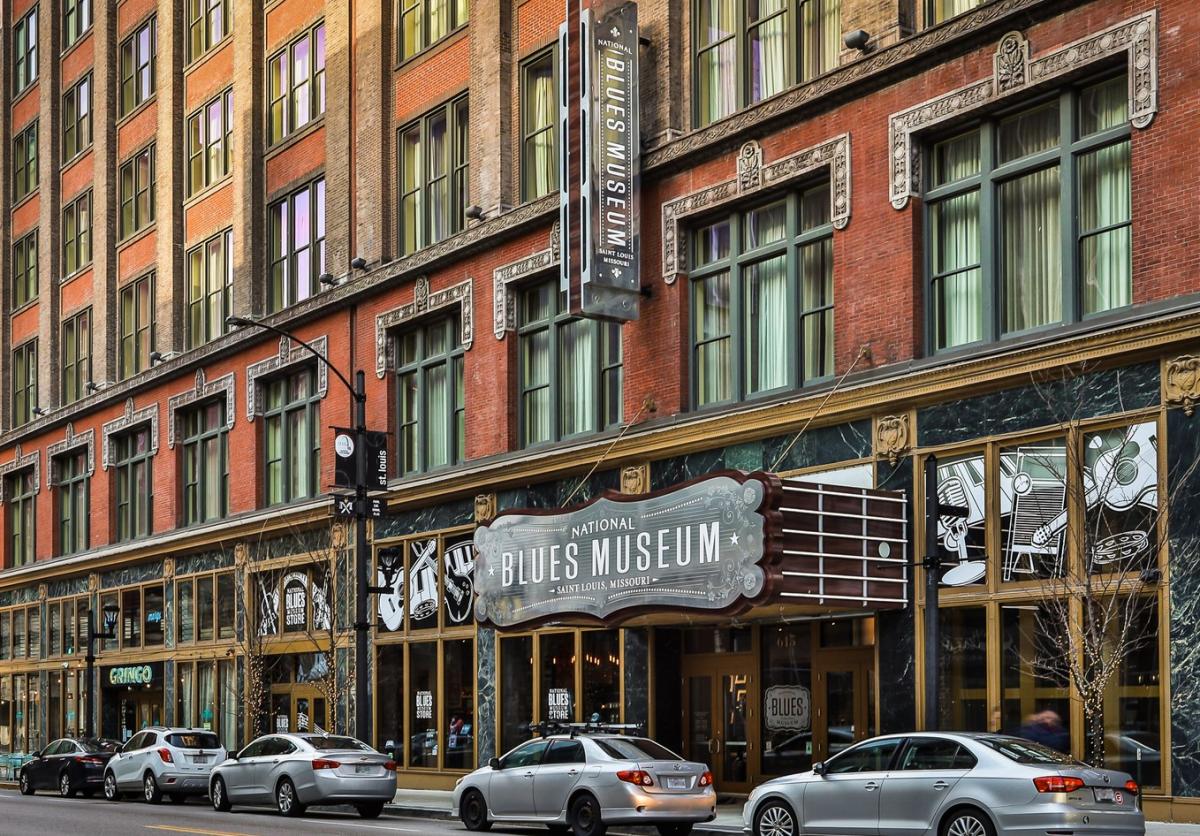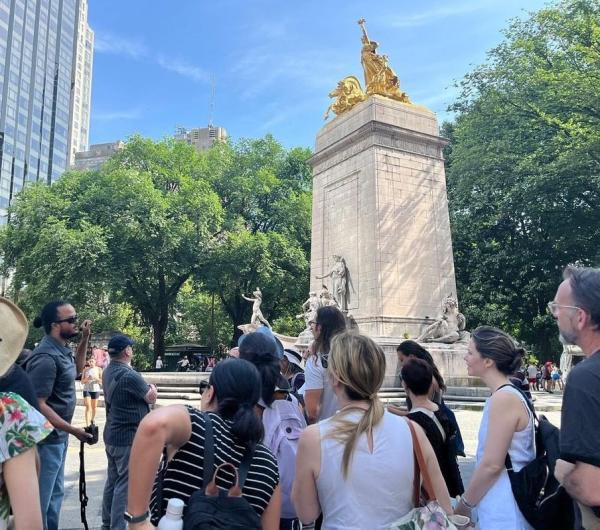Celebrating 20 Years of Landmarks of American History and Culture

NEH Landmarks group at the Kennedy Space Center Visitor Center
courtesy National Council for History Education

NEH Landmarks group at the Kennedy Space Center Visitor Center
courtesy National Council for History Education
This year, the National Endowment for the Humanities (NEH) proudly celebrates the 20th anniversary of its Landmarks of American History and Culture grant program. Since its creation in 2004, the Landmarks program has helped promote and enhance humanities education across the United States through a series of one-week residential, virtual, and hybrid workshops. These workshops empower K–12 educators, higher education faculty, and humanities professionals to incorporate place-based approaches into their teaching and scholarship, thereby enriching their understanding and instruction of American history and culture.
About the Program
The Landmarks grant program supports professional development workshops at historically and culturally significant sites, allowing educators to engage directly with the locations where pivotal events in American history took place. This immersive experience fosters a more nuanced, comprehensive, and contextually rich approach to humanities education.
The program was initially offered for K–12 educators. Over the past two decades, the program has expanded, now providing funding for K–12 educators and higher education faculty and staff, as well as advanced graduate students and humanities professionals working in museums, historic sites, archives, and libraries. To date, the Landmarks program has awarded over $61 million to 400 projects, with approximately 31,000 participants benefitting from these experiences across the United States and its jurisdictions.
Highlights of the Past Summer
Sixteen Landmarks programs were offered across 10 states this summer. These workshops allowed teachers to delve into humanities topics ranging from Japanese American incarceration during World War II to the legacy of blues music in St. Louis. Below are some highlights:
Heart Mountain, Wyoming, and the Japanese American Incarceration
For the fourth year in a row, the Heart Mountain Wyoming Foundation has hosted workshops for K–12 educators focusing on Japanese American incarceration during World War II. These weeklong sessions, held at the newly established Mineta-Simpson Institute, offered an in-depth examination of this significant chapter in American history and the enduring issues it raises today.
This Landmarks program delves into the forced relocation of over 120,000 individuals of Japanese descent from their homes to camps following Japan’s attack on Pearl Harbor. Heart Mountain, situated in northwest Wyoming between the towns of Cody and Powell, is one of these historic sites.
The Space Age on the Space Coast
Held at the Kennedy Space Center in Florida in partnership with the Astronauts Memorial Foundation (AMF), this Landmarks program spotlighted key sites associated with the American origins of space exploration, including the Cape Canaveral Space Force Station, Cape Canaveral Lighthouse, Merritt Island National Wildlife Refuge, and various exhibitions and experiences at the Kennedy Space Center. Participants explored the connections between politics, technology, race, gender, and the environment, gaining a holistic view of America’s scientific past by focusing on the human aspect of these developments.
The St. Louis Blues: Music, Migration, and the Movement
St. Louis has been home to numerous influential figures in blues and American music, including Scott Joplin, W.C. Handy, Chuck Berry, and Ike and Tina Turner. The contributions of these composers and performers stand in contrast to the urban history of discrimination and displacement, making the city a key location for studying race relations throughout the 20th and 21st centuries.
In this workshop, participants explored St. Louis’s physical and cultural landscape, using music to trace the city’s historical changes and its impact on Black culture. They engaged with prominent speakers and community members, including civil rights activist Percy Green, who worked with CORE and ACTION and famously climbed the Gateway Arch in 1964 to protest racist hiring practices. Participants also met St. Louis DJ, musician, and organizer Bernie Hayes, a pioneer of Black radio who collaborated with Martin Luther King Jr.
The National Blues Museum on Washington Avenue, close to many significant landmarks, served as a focal point. Through seminars with scholars and researchers, educators were able to develop a deeper understanding of how St. Louis’s musical legacy can inform inclusive and culturally relevant curricula.
The Homestead Steel Strike and the Growth of America as an Industrial Power
In July, K–12 teachers, museum educators, and librarians gathered in Pittsburgh to attend this Landmarks program on the Homestead steel strike of 1892 and its lasting impact on American industry. Hosted by the Archives & Special Collections Department at the University of Pittsburgh Library System and the Rivers of Steel National Heritage Area, this workshop offered an examination of the primary sources related to industrialists Andrew Carnegie and Henry Clay Frick’s business practices, worker conditions, and the aftermath of the battle, as well as place-based learning at Henry Clay Frick’s home, Clayton, the Carrie Furnaces, and other structures related to the Homestead Steel Works. Educators gained valuable insights into the historical conflict between management and labor not only through traditional archives, but also by examining music, literature, and theater.
Creative Spaces/Contested Spaces: Reinterpreting Italian American Public Art in New York City
This Landmarks workshop for higher education faculty brought educators to the Fashion Institute of Technology (FIT) to research and create place-based lesson plans centered on Italian American public art. Participants examined how many of New York City’s public monuments by or about Americans of Italian descent were constructed, interpreted, forgotten, or became sites of conflict. Attendees examined works such as Rockefeller Center’s Palazzo d’Italia, the Triangle Shirtwaist Memorial, and the Columbus Monument at Columbus Circle. With recent discussions about Italian explorers and their connection to colonization and genocide, along with the significant role Italian American artists have played in shaping New York’s monuments, the workshop offered a way to understand and address broader humanities themes like aesthetics, power, and cultural identity.
Additional Resources
To find out about the other Landmarks programs offered this summer or in previous years, visit NEH’s list of professional development offerings for educators. Be sure to check out NEH’s “Why Here?” video series, where project directors and guest scholars discuss the historical significance of the sites where they’ve led programs. You can also watch our Landmarks of American History and Culture 2024 video for an overview of this year’s programs, or apply to host a Landmarks program at your institution.
For educators looking to deepen their knowledge and enhance their teaching materials, the NEH offers a comprehensive Teachers' Guide for Landmarks of American History and Culture. This guide provides valuable insights and resources for incorporating place-based Landmarks materials into the classroom, supporting educators in bringing historical events and cultural contexts to life for their students.
--By Grace Park







